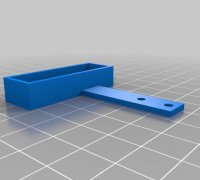This plugin is a port of the PIDAutoTune logic from CraftBeerPi 2.2, with some added features to aid in usability. Track loaded in traktor scratch pro 2 wont play. The purpose of autotuning is achieve a better set of variables to use for configuring your other PID-controlled devices, such as a heating element in your mash tun. Once you have used PIDAutoTune to calibrate your system, you will be given three numbers which you must enter into the settings page for the appropriate device.
Pid Autotune Arduino
Here is an example of the G-code command used to launch PID autotune: M303 E0 S190. E0 is the number of the heater or bed temperature control module, determined by the order that they appear in the config file. Here it would be 0 for the hotend, and 1 for the bed. Temperaturecontrol-pid-autotuning.txt; Last modified: 3 years ago. PID Tune to your hotend will result in better quality prints so it’s worth the time to learn how to do it. It’s not that hard at all. If you haven’t installed the Marlin Firmware on your 3D Printers Mainboard or don’t know what Marlin is check out my article; Beginner Guide to Marlin 1.1 3D Printer Firmware before trying this tutorial.
For more info on PID and autotuning, you can check out the following articles:
Installation
- Install the plugin by navigating to the System menu in CraftBeerPi 3.0 and then clicking Add-On.
- Download the plugin and then reboot your Raspberry Pi

Configuration

- Click on the System menu and choose Hardware Settings.
- If you do not have a kettle already created, click Add and create one first. Otherwise, click on the name of the kettle that you want to calibrate with autotune.
- Under the Logic drop-down menu, choose PIDAutoTune and then configure the following options:
- output step %: defines the output of the autotune-algorithm when stepping up/down, e.g. output step = 100; step up (=heating) output = 100; step down (= cooling) output = -100. This setting should stay at 100%
- max. output %: limits the maximum power output. This is useful if your heater is overpowered and would heat up the kettle way too fast. If you don't want to limit your heater, leave this at the default value of 100%
- lookback seconds: determines how far the algorithm will look back when trying to find local (temperature) extrema (minima/maxima). If the algorithm recognizes even short peaks as extrema, you should increase this value. If it doesn't recognize actual extrema, you should decrease it. Usually the default of 30 seconds work fine.
- Descriptions of settings from the CraftBeerPi Wiki
- Click the Update button once your settings are entered.
- Now we are ready to begin the autotune process. Navigate to the Brewing dashboard and turn on any pumps or agitators that you would normally be using with this kettle.
- Change the set point for the kettle to a typical temperature, like one you would use for mashing.
- Click the Auto button for the kettle you want to calibrate and the autotuning process will commence.
- The kettle heater will come on and bring the temperature up to the set point, and intentionally overshoot it. Then an oscillation will occur where the temp goes over and then back under the set temp many times. This process can take over an hour depending on many factors, so leave it be while it's calibrating.
tail -f ~/craftbeerpi3/logs/autotune.log
DEV-C is a fully-featured integrated development environment (IDE) for creating, debugging and creating applications written in a popular C programming language. Even though tools for the development of C software have undergone countless upgrades over the years, a large number of developers located all around the world have expressed a wish to continue using DEV-C. Nod32 latest update free download.
- When it's finished, the Auto mode will disable itself and you will see several notifications. These will give you the PID values for the primary 'brewing' rule as defined by the autotune algorithm.
- Now you can navigate back to the Hardware Settings screen under the System menu, pick your kettle, and change the Logic setting to PIDArduino (or another PID-based plugin of your choice).
- Copy and paste the PID values from the on-screen notifications into the fields on the settings page. Click Update when done.
Log File
Duet Pid Autotune Video
If there were any problems along the way, or you would like to see the other values and calculations that autotune determined for your system, you can click on the System menu, choose Logs, and then download the autotune.log file.